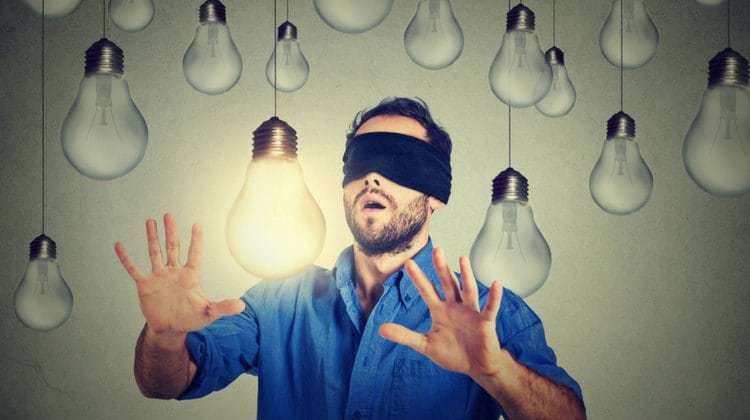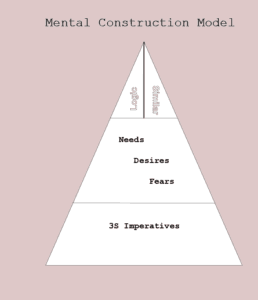It’s interesting that there are so many perspectives to consider a theory from. For instance, I started thinking about intuition (from the Mental Construction point of view). Here’s some bullet points reflecting the hops between the various lines of thought.
Intuition
- Intuition is the result of pattern matching, but it is a partial match, not an exact match, nor is it a deduction. We see a pattern that is similar to a pattern we know. If the match between the current pattern and the remembered pattern is close enough, then we act as if the remembered pattern is enforced and consequences of the old pattern will follow the current situation.
- What is a close enough match? It depends on the action of your genes on your neural processes, which I call the Almost Gate.
- We use intuition (or insight or induction or common sense) very often, but intuition is not a logical process. It relies on similarities, not consequences.
- But in discussions, logic is nearly always taken as the required justification of our actions.
- Logic can do a lot. We can explain and justify many of our actions by applying deduction to our beliefs. But where do those beliefs come from?
- Surely some of our beliefs are factual, but many more depend on associations that we apply. Those associations are more often than not dependent on the patterns we see and use to guide our thinking.
Emotions
- Wait, what about emotions? Are they are the source of intuitions or a third manner in which we think? When some people can’t name the reason for their choice, they often cite emotions. Emotions are an earlier stage of thinking, below the surface of controlled awareness. Emotions arise in the limbic system, prior to the level of conscious thought. They are the melding of physiological needs and fears with our physical skills and experiential history. Satisfying our emotions guides the path of our higher-level thoughts. Emotions underlie our thinking, both intuition and deduction.
- Non-verbal, quick, easy. Non-dominant hemisphere (term for half of cortex which does not control language or dominant hand).
Words and Logic
- Uses words, slow, requires effort. Dominant hemisphere (typically the left, approximately 94% of the population)
- The two hemispheres communicate regularly with each other, via the corpus callosum.
- Thinking, when we are not in an extreme situation, can proceed in an iterative fashion, allowing each hemisphere to exchange its best assessment of the current situation, to the other hemisphere.
- Mental Construction Structured reasoning from neurons to cognition
- Almost Gate Our neural threshold results in similar things being treated as identical
- 3S Imperatives Emotions lie between physiological drives and awareness


